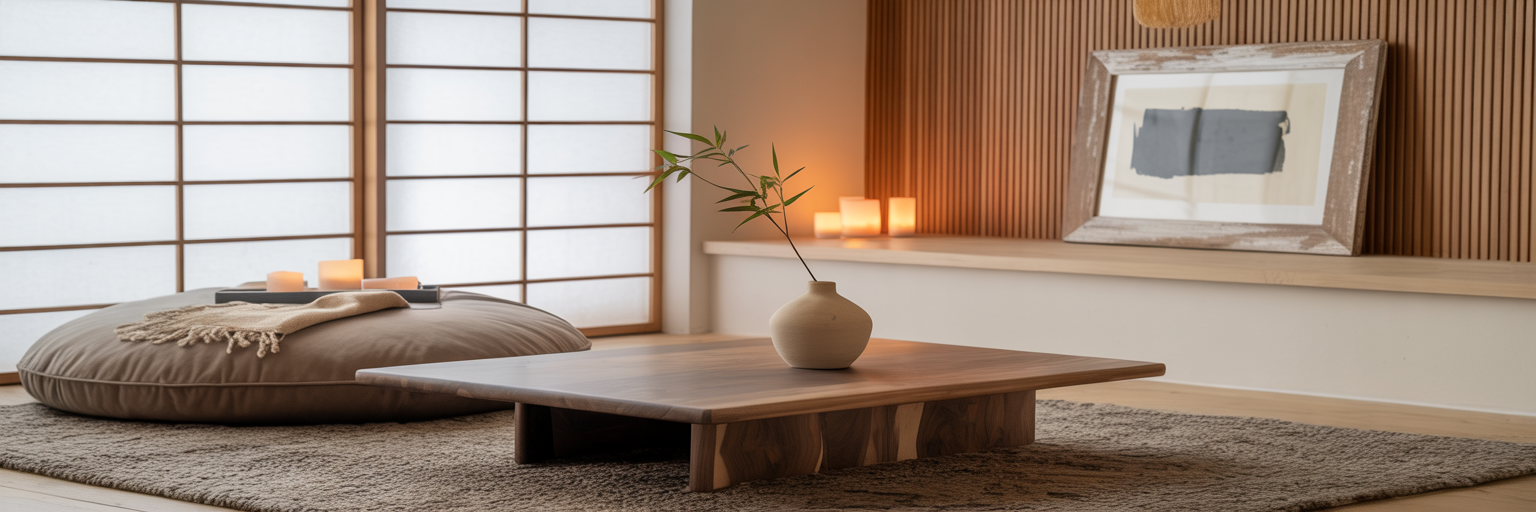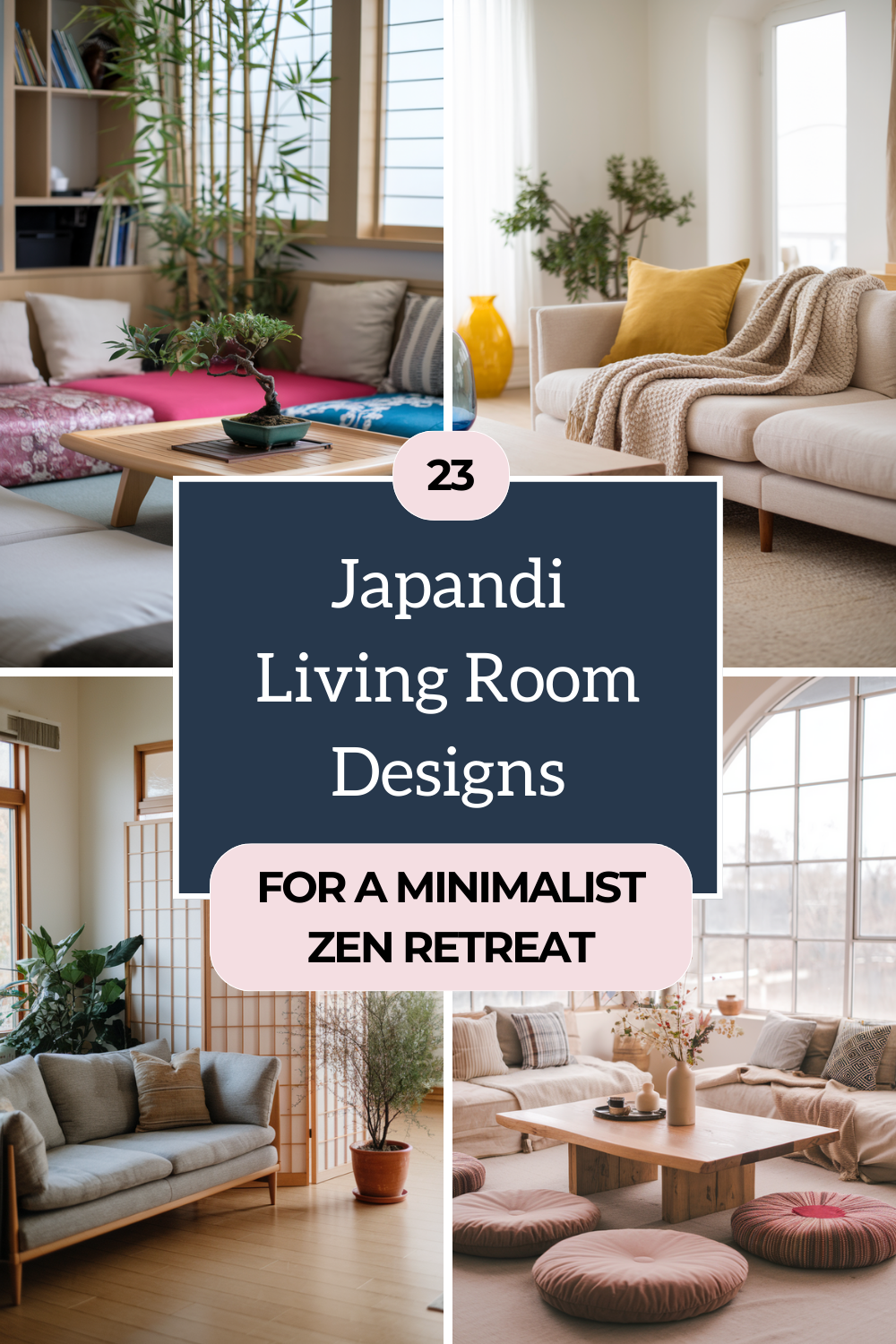
Japandi
Still dreaming of a space that feels as calm and inviting as it is stylish? Friends, you’re in for a treat. Let me introduce you to Japandi design. Yes, you heard that correctly: Japandi. It’s the best of both worlds: think Japanese minimalism mixed with the cozy warmth of Scandinavian interiors. But Japandi isn’t just about design; it’s about a lifestyle—one that values simplicity, functionality, and the beauty of natural materials. Imagine clean lines, a neutral color palette, and just the right amount of cozy warmth, where every corner invites you to relax and unwind. It’s the ideal way to bring a sense of calm and Zen into your home—one room at a time. Below, I’ve put together some of my top Japandi design ideas that will help you create a space that’s as swoon-worthy as it is serene.

Zen corner or nook
One of my favorite ways to incorporate Japandi design at home is by creating a simple Zen corner—a little sanctuary just for you. It doesn’t have to be big or elaborate. Even a spare corner in your bedroom or living room can become a calming retreat with a few thoughtful touches.
Start by choosing a low chair or cushion, something that invites you to sit, reflect, and unwind. I like to layer in natural textures here—a linen throw, a bamboo mat, or a small side table made of warm wood. Add a candle or an incense holder, maybe a small potted plant or a stone sculpture, and suddenly, the space takes on this serene, almost meditative quality.
It’s the perfect place to sip your morning tea, journal before bed, or just breathe deeply for a few minutes between the chaos of daily life.

Low-profile furniture
In Japandi interiors, the height of your furniture matters more than you might think. Low-profile sofas, coffee tables, and even very low beds (as seen in IKEA) create a calming, grounded feel that invites you to slow down and stay awhile. I’ve noticed that when everything sits closer to the floor, the space just feels more relaxed and intentional—it’s like it gives your mind a chance to settle.
This doesn’t mean you have to sacrifice comfort or style. Look for pieces with clean lines and soft edges—like a mid-century-style chair in natural wood or a plush floor cushion in a neutral tone. Pair them with a cozy area rug and layered textiles, and your room will feel open yet warm, minimal but far from stark.
I especially love this approach in living rooms and reading nooks. It’s a subtle design shift that really changes the energy of a space.

Japandi color palette of neutrals and earthy tones
If there’s one thing that defines Japandi style, it’s the palette—soft, muted tones that instantly soothe the senses. Think warm whites, soft taupes, pale clay, mossy greens, and deep charcoal. There’s something about these colors that makes a room feel calm and cohesive without being boring or cold.
I like to start with a neutral base—maybe creamy walls or light wood floors—and build from there with earth-toned furniture, textiles, and decor. A sand-colored linen sofa, a walnut wood table, or even a few sage green pillows can make the space feel grounded and serene.
The beauty of this palette is how timeless it is. It doesn’t shout for attention, but it creates a peaceful atmosphere that you’ll never tire of coming home to.

Pendant lighting for soft ambience
Lighting might be one of the most underrated parts of home design (much to my chagrin), but in Japandi interiors, it plays a starring role (hooray). The goal is always soft, diffused light that creates a warm glow—never harsh or sterile. That’s why I love using pendant lights made of natural materials like paper, linen, or woven rattan.
These lights don’t just brighten a space—they set the mood. A paper lantern pendant over the dining table, a minimalist rattan shade in the entryway, or even a small linen-covered lamp in the corner of a room all help to create that cozy, intentional vibe.
And it’s not just about the fixtures themselves. The color temperature of the bulb matters too—stick with warm, soft white light to really enhance the cozy, spa-like atmosphere Japandi is known for.

Greenery and natural elements
There’s something about bringing nature indoors that instantly makes a space feel more alive—and Japandi style embraces this wholeheartedly. Greenery adds softness and serenity to even the most minimal spaces, and the key is to choose plants that feel sculptural, organic, and intentional.
I tend to gravitate toward rubber trees, snake plants, and peace lilies for their beautiful form and ease of care. A small bonsai tree can also be a stunning focal point if you want something truly artful. Just remember: less is more. One or two well-placed plants in simple planters—clay, ceramic, or stone—can do so much more than a dozen scattered around the room.
And if you’re like me and love the idea of greenery but not always the maintenance, dried branches or preserved stems are another beautiful way to bring in that natural touch.

Textural Japandi furniture and decor
Even though Japandi interiors lean minimal, they never feel flat—and that’s all thanks to texture. I absolutely love mixing materials like raw wood, woven rattan, soft linen, wool, and matte ceramics to bring dimension and warmth to a room.
Imagine a clean-lined oak dining table paired with a rough linen runner or Japandi-inspired rug, a wool cushion on a wooden bench, or a hand-thrown clay vase on a stone countertop. Each element is subtle, but together, they create this incredibly inviting, tactile experience. It’s a quiet kind of richness—not flashy or trendy, but deeply comforting.
Texture is also a great way to add interest to a neutral space. When everything is in a similar color palette, those material contrasts really stand out and give the room depth.

Wood for an organic space
Wood plays such a foundational role in Japandi interiors—it’s warm, grounding, and deeply connected to both Japanese and Scandinavian design traditions. I love how it brings that sense of calm and balance into a space, whether it’s through a rustic dining table, floating wood shelves, or even ceiling beams.
Lighter wood tones like ash and oak feel fresh and airy, while richer tones like walnut add a bit of depth and contrast. And you don’t have to commit to big furniture pieces to get the look. Even small details—like a wood-framed mirror or a natural wood tray—can infuse your space with that organic, Japandi vibe.
It’s all about showcasing the beauty of the material itself. Let the grain, tone, and texture shine.

Art that’s simple yet striking
When it comes to artwork in a Japandi home, restraint is key. This is not the place for busy gallery walls or over-the-top prints. Instead, I like to choose one or two pieces that are simple, calming, and deeply intentional—something that draws the eye without overwhelming the senses.
Think abstract prints in soft hues, delicate line drawings, or serene nature-inspired photography. Even handmade paper art or minimalist Japanese calligraphy can be stunning in the right frame. I usually opt for natural wood or black frames to keep things understated and cohesive with the rest of the space.
The negative space around the art is just as important as the piece itself. It gives the eye room to rest and helps create that peaceful, uncluttered look that Japandi is all about.

Sliding doors or Shoji screen room dividers
One of my favorite Japandi-inspired upgrades is using sliding doors or shoji-style screens to define spaces without closing them off completely. They’re practical, elegant, and such a beautiful way to bring in that soft, airy aesthetic.
I love how they diffuse light and create gentle separation—perfect for open floor plans or small apartments where you still want privacy in spots like a bedroom, home office, or reading nook. The traditional grid pattern and rice paper panels feel timeless, but you can also find modern interpretations with glass or fabric for a more updated take.
They’re not just functional—they’re a design feature in their own right, adding texture, movement, and a soft architectural element to any room.

Statement fireplace or mantel
A fireplace is one of those classic features that instantly makes a space feel warm and grounded, which makes it a perfect fit for Japandi interiors. But instead of ornate mantels or bold tile, I like to keep things minimal—think clean lines, matte finishes, and natural materials like stone or wood.
A low-profile hearth paired with a wood mantel and just one or two carefully chosen accents—maybe a ceramic vase or a trailing plant—can create a stunning focal point without stealing attention from the rest of the room.
Even if you don’t have a working fireplace, you can still create the look with a faux surround or inset shelving. The key is to keep it calm, clean, and connected to the rest of your space’s natural textures and tones.
More Ideas
I hope that these Japandi design ideas give you the inspo you need to create effortless, serene spaces. Don’t be afraid to make the trend your own with personal touches that feel cozy and welcoming—you’ll be amazed at how quickly your space transforms into your dream Japandi-inspired home! Peace, love, and Zen, my friends.



